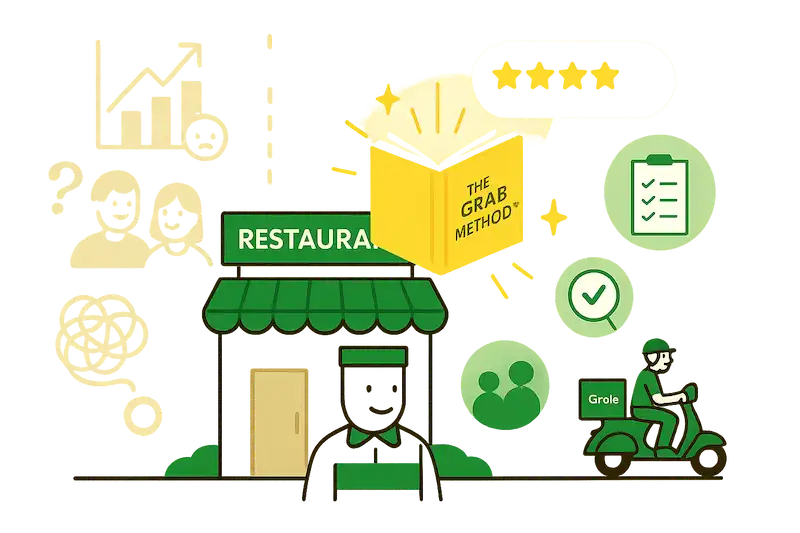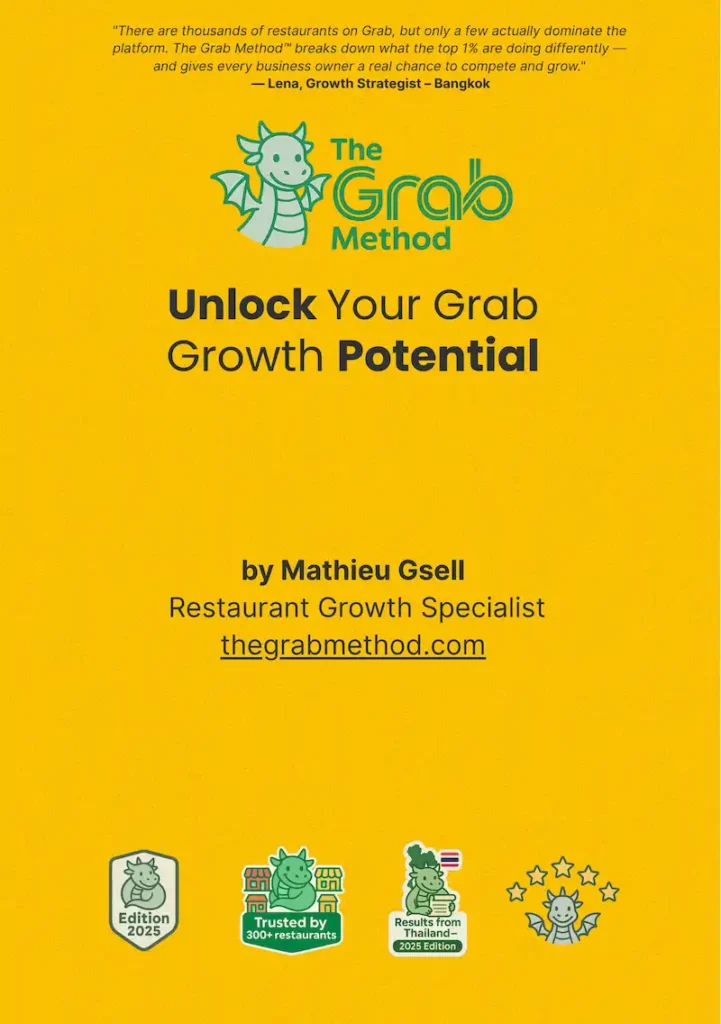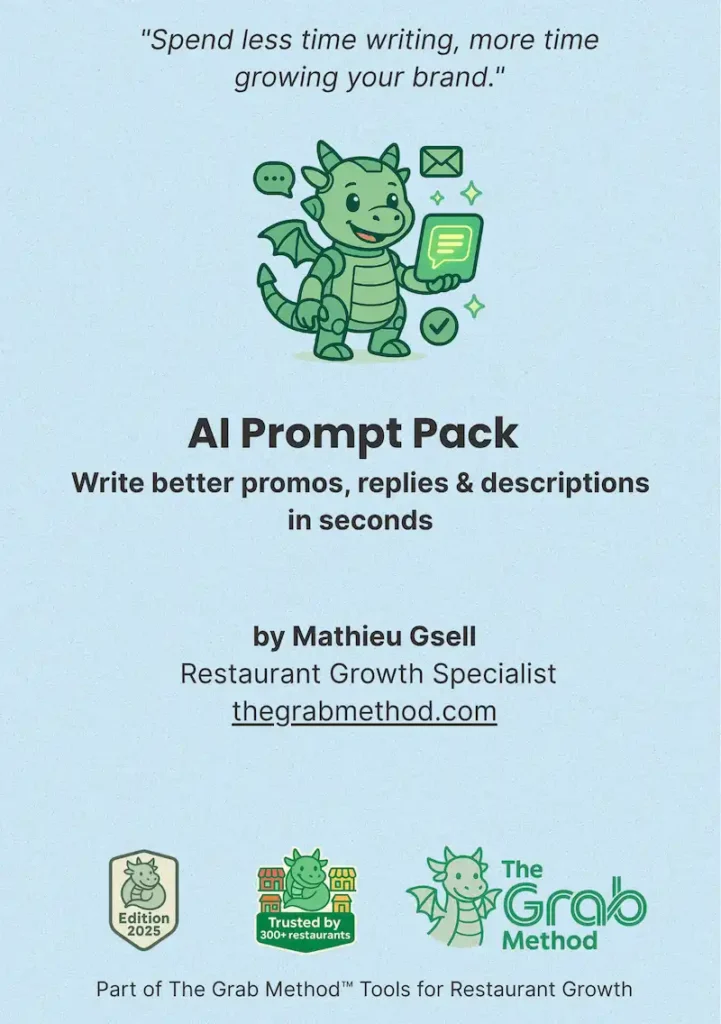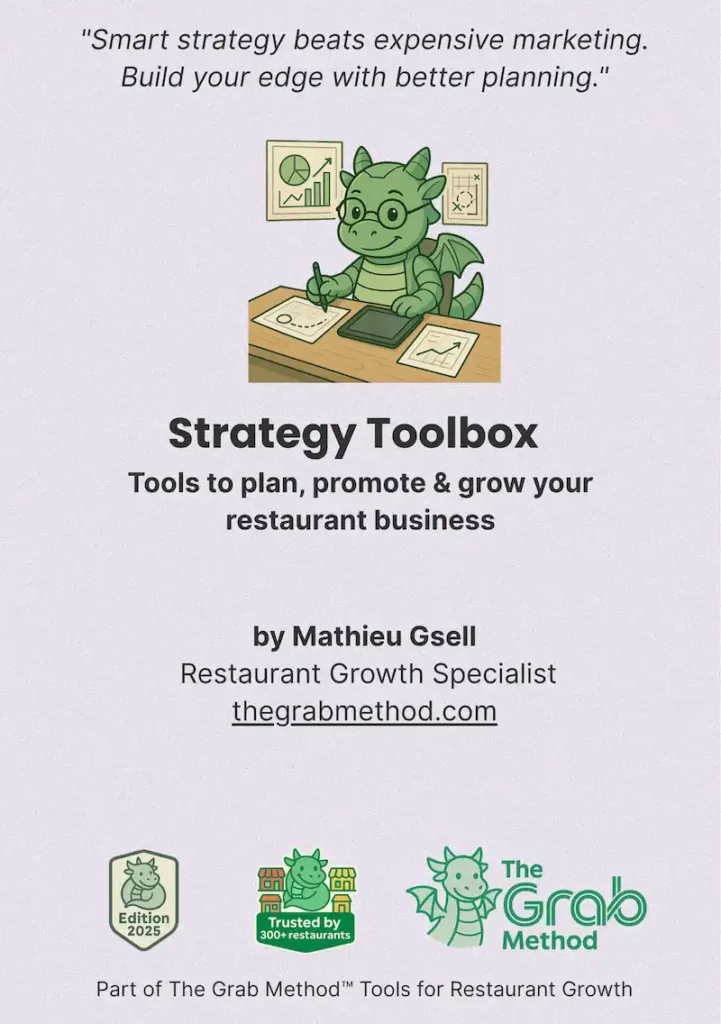Ever wondered why some restaurants appear at the top of GrabFood? Understanding the Grab algorithm is the key to getting more visibility. For restaurant owners in Singapore, Thailand, and across Southeast Asia, cracking this “algorithm code” is incredibly valuable – it means more visibility, more clicks, and ultimately more orders. Grab doesn’t publicly spell out every detail of how rankings work, but through experience and data we can identify the key factors. This article will pull back the curtain on how the GrabFood algorithm works and what you can do to rank higher and get more customers.
We’ll cover how Grab determines rankings (the visible and hidden factors), what quality signals it rewards, how you can use promotions to give yourself a boost, and some advanced tricks to outsmart your competition. By the end, you’ll have a clear roadmap to start climbing up the GrabFood ranks – and staying there.
GrabFood uses a variety of factors to decide which restaurants to show first when a user opens the app or searches for a cuisine. Understanding these factors is the first step to improving your ranking. While Grab’s exact formula is proprietary (and can evolve), here are the most influential elements:
In short, the algorithm looks at a mix of performance metrics, customer satisfaction, and relevance. If you excel in these areas, you stand a much better chance of showing up early in the list when customers are looking for food.
Digging deeper into the algorithm, two of the most important pillars are quality and reliability. Grab wants to keep customers happy, so it uses various quality signals to decide if your restaurant is worthy of being recommended to users.
First, as mentioned, is your customer rating. Think of this as a crowd-sourced quality score. A restaurant with a 4.7★ average is clearly delighting customers, and Grab’s system will reward that. In fact, higher average ratings directly contribute to better visibility:contentReference[oaicite:17]{index=17}. If your rating is on the lower side, it’s essential to improve it (through better food, service, and packaging) because it’s affecting your rank.
Second, your reliability metrics (acceptance rate, cancellation rate, on-time rate) are crucial quality signals. A restaurant that cancels orders or frequently marks items unavailable creates a bad experience for users. Grab knows this, and its algorithm will push unreliable merchants further down. On the flip side, if you maintain near-100% acceptance and very low cancellation, you’re showing the platform and customers that you’re dependable. That dependability gets baked into your ranking – you’ll likely be placed higher than similar restaurants with spotty records:contentReference[oaicite:18]{index=18}.
Another quality factor is something you can’t see but is happening in the background: conversion rate (how often people who see your listing end up ordering from you). If lots of users click on your restaurant and then abandon their carts, it signals maybe something’s off (perhaps your menu prices are high or menu isn’t appealing). But if people consistently order after viewing your page, that high conversion tells Grab your listing is attractive and relevant. While you can’t track this metric easily on your own, improving photos, descriptions, and having good reviews all contribute to better conversion – and thus a better ranking.
In summary, focus on quality across the board. Keep diners happy and the orders flowing smoothly. The better the experience you provide, the more the algorithm will favor you. High ratings, positive reviews, and a solid fulfillment record are like gold stars in Grab’s eyes – accumulate them, and you’ll climb the ranks faster.
Let’s talk about promotions – not from a marketing standpoint, but specifically how they can influence your ranking on Grab. When you run a promotion, two things happen that can help your position:
The key is to use promotions strategically. A steep discount can increase orders (and thus improve your algorithm metrics like popularity and conversion rate), but you don’t want to give away all your profit for too long. One strategy is to run short, targeted promos during times when you want to climb the ranks – say, a week-long campaign to boost your presence among new users, or a promo on a usually slow Tuesday to generate activity. Once the algorithm “notices” the increased traction, you might maintain a higher baseline rank even after the promo ends (especially if you gained new regular customers in the process).
Keep in mind, promotions are a competitive space too. Many restaurants run them, so think about what makes yours compelling. Also, be sure you can handle the potential influx of orders – maintain your quality and speed during the promo rush, or it could backfire with bad reviews. When done right, playing the promo card can be a powerful tactic to jolt your Grab ranking upwards and secure a better long-term position.
To illustrate how the algorithm factors come together, let’s look at a hypothetical example. Imagine Spicy Thai Bistro, a restaurant in Bangkok that used to languish at the bottom of the Thai cuisine category on Grab. They had decent food but weren’t getting many orders from the app.
The owner decides to make a concerted effort to improve their GrabFood performance. Over a month, Spicy Thai Bistro implements several changes: they update their menu with attractive photos for every dish, shorten the menu to highlight their top 10 bestsellers, and adjust prices to be more competitive. They also train staff to accept orders within seconds and mark items unavailable if sold out to avoid cancellations. Simultaneously, they launch a “15% Off Pad Thai Week” promotion to drive interest.
The results start to show quickly. Their acceptance rate goes to 99%, cancellation drops to near 0 as inventory is tightly managed, and their average prep time improves by 5 minutes. Customers respond to the promo and new visuals – order volume doubles, and with more reviews coming in, their rating rises from 4.0 to 4.3. Within a few weeks, Spicy Thai Bistro’s ranking in the Thai cuisine search moves from the abyss (page 10+) up to page 2, and during their promotion, they even appeared in the “Popular Near You” carousel. The increased visibility created a new flow of regular customers. Even after the promo ended, the restaurant maintained higher daily order volumes than before, which in turn keeps them ranked higher due to sustained popularity and great service metrics.
This case study, while fictional, represents real patterns we’ve seen: focus on the algorithm’s favorite metrics and your GrabFood performance can transform. It’s not instant magic – but over several weeks, the benefits compound. A few smart tweaks can take you from virtually invisible to a go-to option for hungry users.
Once you have the basics down (fast handling, good ratings, promotions, etc.), you can try these advanced techniques to squeeze even more out of Grab’s algorithm:
By implementing these advanced tactics, you’re fine-tuning an already well-performing Grab listing into an algorithmic powerhouse. It’s about eking out advantages wherever possible: through search visibility, user behavior, and continuous improvement. Keep an eye on your GrabMerchant analytics (like what times you get the most orders, which items are popular, etc.) and use that data to iterate your strategy. The restaurants that dominate GrabFood aren’t there by accident – they’re constantly optimizing and experimenting.
Climbing to the top of GrabFood’s rankings can be complex, but you don’t have to figure it out alone. The Grab Method™ is here to provide expert guidance and hands-on support to elevate your restaurant on Grab.
Contact our team: hello@thegrabmethod.com
Learn more: thegrabmethod.com
We’ve helped restaurants of all sizes rank higher and reap the rewards. Let’s unlock GrabFood’s potential for your business together!




Get The Grab Method™ now and start scaling today.